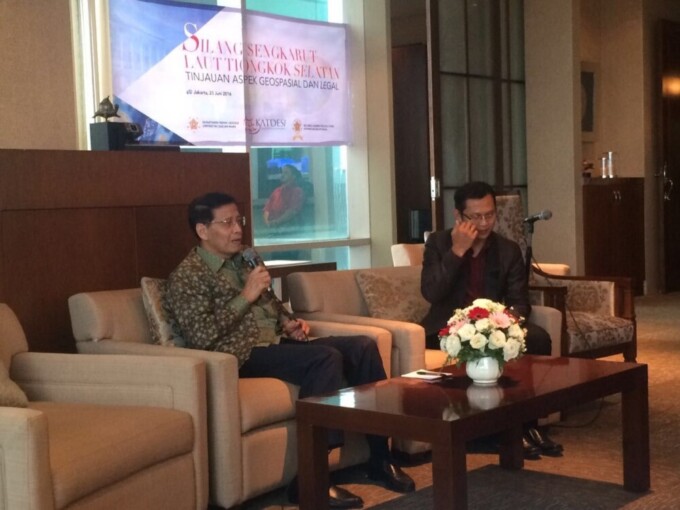
The South China Sea has come under the spotlight recently. Chinese seamen often seen taking the fish out from the South China Sea around the Natuna islands, which China claims as belonging to their traditional territory. Last Friday, a Chinese fishboat was arrested by the Indonesian Navy as it was caught doing illegal fishing in the Indonesian waters. In response, President Joko Widodo’s visit to Natuna on Thursday (23/6) reaffirms the fact that there is a serious issue on the area.
On the other hand, Geodetical Engineeering Department UGM, alumni association are aware that the issue is multidisciplinary. During this time, the South China Sea has only been discussed by political and legal experts while in fact there is a technical dimension or geospatial to that issue. This explains the background of the South China Sea Forum Group Discussion being held in the Menara Global in Jakarta that brought together former Foreign Affairs Minister, Dr. Hassan Wirajuda, and UGM alumni.
In the event Hassan Wirajuda submitted his views on the role and position of Indonesia on the South China Sea in the law and diplomacy context. “It’s very important for Indonesia to maintain a dialogue with China and other parties in that area,” said Dr. Wirajuda.
UN Convention negotiator on International Ocean Law, Prof. Djalal, said Indonesia had a strategic role to establish communication with signatories to always deal with the potential for conflict in the South China Sea.
At the same place, Head of Geospatial Information (BIG), Dr. Priyadi Kardono, reaffirmed the significance of geospatial information, such as maps, to enable giving a response to the territorial and jurisdiction conflict as what happened with the South China Sea.
Dr. I Made Andi Arsana, UGM Geodetical lecturer that focuses on ocean law geospatial aspect, especially maritime borders, also shared his views. He said that geospatial dimension was important to understand the South China Sea issue that so far has been seen merely in terms of the political and international relations.
“It’s crucial to know the position and dimension of the potential for the South China Sea before we can suggest an option of solution,” said Andi.
Recommendation came up in the meeting, including that the South China Sea is a multidimensional issue that needs multidisciplinary approach to resolve. The government also has to be aware of the significance of earth sciences, such as Geodesy and especially geospatial (maps) information that is produced from the mapping process of earth surface in order to manage the sovereignty and jurisdiction of the Unitary State of the Republic of Indonesia that includes the South China Sea. The government should aslo maintain and increase leadership role in ASEAN through networking with member countries on the strategy to deal with this issue.


